Discover how to grow a bountiful Thanksgiving feast right in your own backyard! From hearty vegetables to flavorful herbs and even seasonal fruits, our step-by-step guide shows you how to plan, plant, and harvest a garden that will wow your holiday table. Perfect for beginners and seasoned gardeners alike, these tips will help you enjoy fresh, homegrown ingredients while saving money and creating lasting family memories.
Imagine serving your Thanksgiving dinner with fresh vegetables, herbs, and fruits all harvested from your backyard garden. It’s easier than you think! Whether you’re a seasoned gardener or just starting out, growing your own Thanksgiving feast can be a rewarding way to celebrate the season. In this guide, I’ll share the secrets to planting, nurturing, and harvesting a variety of crops that will bring your holiday table to life—and leave your guests asking for seconds!
This is a pinnable post. Tap or hover over any image in this post to pin to your Pinterest Boards.
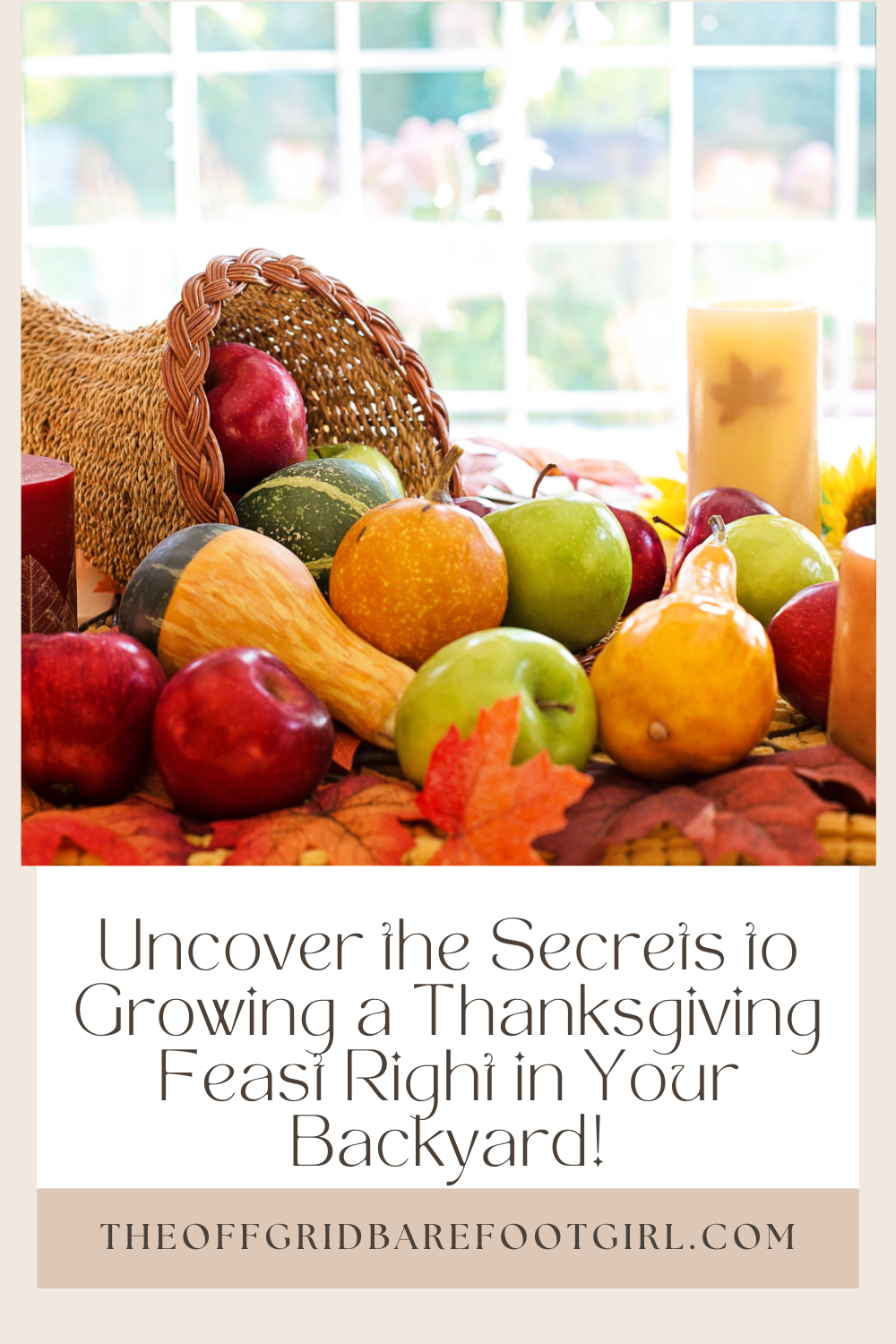
The Joy of Growing Your Own Thanksgiving Feast
Embracing the Tradition of Homegrown Harvests
Thanksgiving is one of my favorite times of the year. It’s not just about the food—it’s about slowing down, gathering with the people you love, and celebrating the harvest season. And this year, I’ve got a little secret for you: you don’t have to buy everything at the store. With a bit of planning, you can grow some of those dishes yourself, right in your own backyard. From fresh vegetables to fragrant herbs, there’s something truly special about serving a meal you helped create from seed to plate. Let me show you how to make your Thanksgiving table a celebration of homegrown goodness that your family—and even your picky eaters—will never forget!
Planning Your Backyard Thanksgiving Garden
Assessing Available Space and Resources: Growing a Thanksgiving Feast
Take a good look at your backyard. Is it big enough to accommodate a vegetable garden or maybe even a few fruit trees? Consider the amount of sunlight it gets during the day too because plants need their daily dose of rays to thrive. Now, moving on to resources, do you have access to good-quality soil? If not, don’t worry. You can always opt for raised beds or container gardening using store-bought soil rich in nutrients. Oh, and don’t forget about water!
Make sure there’s a nearby water source or invest in rain barrels for eco-friendly irrigation. With a bit of planning and utilization of available space and resources, you’ll soon be enjoying a truly homegrown Thanksgiving feast that’ll make everyone at the dinner table drool with delight. Let’s discuss further the options available that are best for you.
Raised Beds and Square-Foot Gardens
When planning your Thanksgiving garden, think of the space you have and the ways you want to grow your vegetables. Perhaps you want to garden in raised beds or develop a square foot garden, or a raised bed square foot garden combined.
Visit my other article in which I discuss how to grow a successful square foot garden and get your FREE Square Foot Garden Printable Planner with grids and layouts to sketch and plan your square foot garden and set it up for success.
Square Foot Garden: The Easy Way To Plan Yours
FREE Square Foot Garden Printable Planner
Garden Towers and Greenstalks
Think vertically. Maybe you have zero space and vertical growing is your best option. You can grow virtually any vegetables in garden towers and greenstalks, which can grow up to 30 to 50 crops in one tower. The best part about greenstalks and garden towers is that they can be grown on balconies, decks, and patios!
I have provided links to where you can get them or to show you what I am talking about.
Get your garden towers and greenstalks here by clicking on the links.
Growing a Potato Patch in Your Backyard
To grow an awesome potato patch for your delicious Thanksgiving mashed potatoes, I have written a whole post explaining how to grow a potato patch in your backyard. In this post, you can learn how to grow potatoes right in your backyard.
Why Growing a Potato Patch Is Important for Survival
Growing a Fall Garden
To learn more about growing a fall garden and what types of vegetables grow best for the fall, visit my post, which explains in further detail how to grow a successful fall garden.
How to Grow a Fall Garden: 9 Best Fall Crops
Determining the Ideal Planting Time
Now, before you start fantasizing about platters overflowing with homegrown goodness, it’s important to plan your backyard Thanksgiving garden. Take a good look at your available space and resources. Is your backyard as spacious as a football field or more like a postage stamp-sized patch of grass? Whatever it may be, work with what you’ve got!
Next, determine the ideal planting time for your Thanksgiving garden. This will vary depending on where you live, so do a little research to find out when the best time is to sow those seeds or transplant those seedlings. Timing is everything, my friends.
Selecting the Right Vegetables and Fruits for Your Thanksgiving Feast
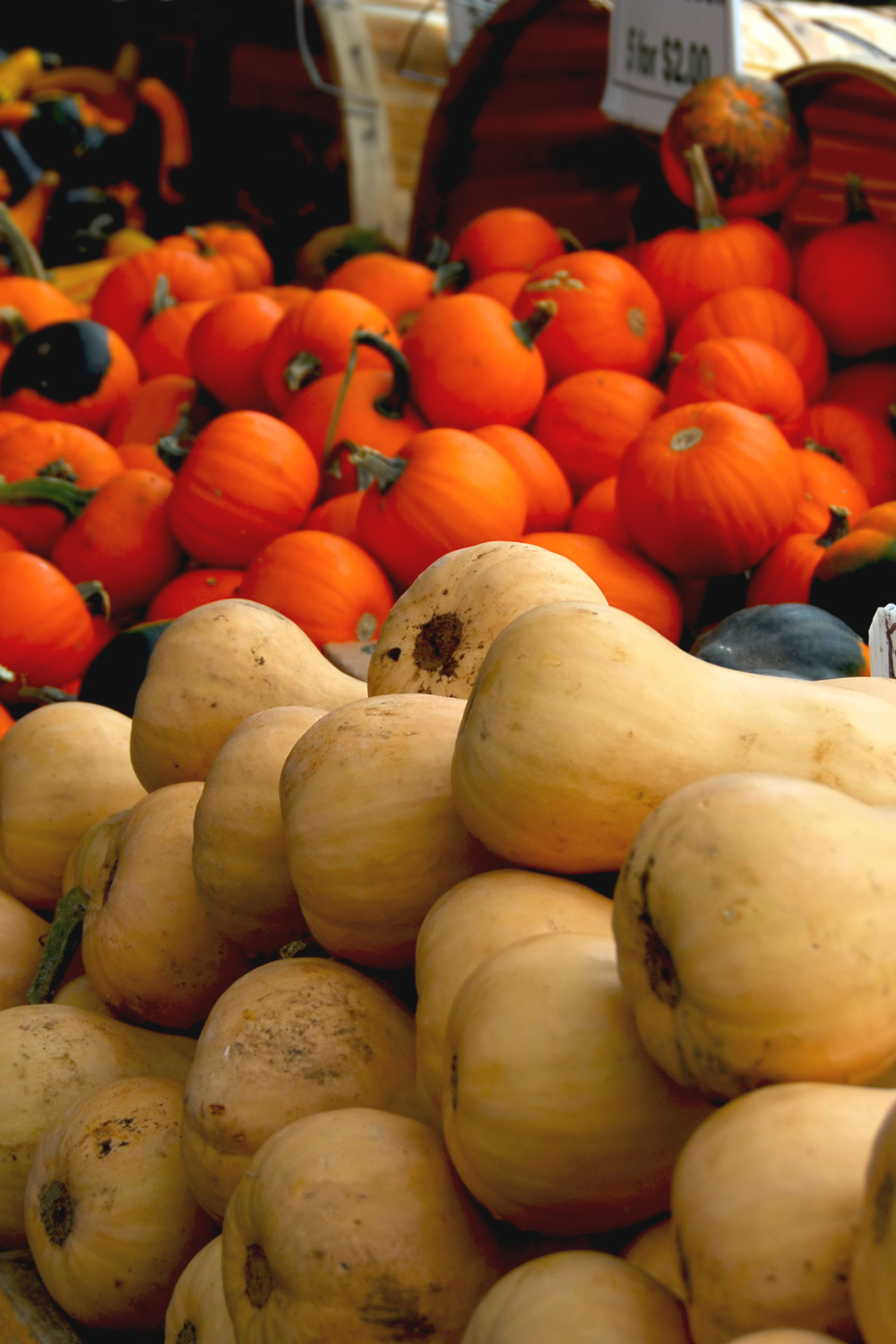
Traditional Thanksgiving Staples
Thanksgiving is all about indulging in delicious food, and while the turkey takes center stage, we can’t forget about the vegetable staples that complete the meal. Classic dishes like green bean casserole, sweet potato casserole, and creamed corn have become beloved traditions for many families. Green bean casserole combines tender green beans with creamy mushroom soup and crispy fried onions on top, creating a delectable side dish that adds a refreshing touch to the richness of other Thanksgiving flavors.
Sweet potato casserole is a delightful combination of mashed sweet potatoes mixed with butter, sugar, and spices, topped with a crunchy pecan streusel. And who can resist the velvety texture and subtly sweet flavor of creamed corn? These traditional vegetable staples bring comfort and familiarity to the table in a casual way that perfectly complements the holiday spirit.
Thanksgiving Vegetable Staples to Grow in Your Backyard
- Pumpkins.
- Green beans.
- Potatoes.
- Corn.
- Sweet potatoes.
- Root vegetables.
- Heirloom tomatoes.
Exploring Unique and Uncommon Options: Growing a Thanksgiving Feast
Now comes the fun part: selecting the vegetables and fruits that will grace your Thanksgiving feast. Of course, there are the traditional staples that no Thanksgiving table should be without – think plump pumpkins, vibrant cranberries, and hearty root vegetables.
But why stop at the classics? This is your chance to impress your guests with unique and uncommon options. How about growing some colorful heirloom tomatoes for a show-stopping caprese salad? Or maybe throw in some flavorful herbs like sage and rosemary to elevate your stuffing game. The possibilities are endless, my fellow gardeners.
Preparing the Soil and Creating the Ideal Growing Conditions: Growing a Thanksgiving Feast
Testing and Amending the Soil
Before you can start planting, it’s important to test and amend your garden soil to ensure it is fertile and provides all the necessary nutrients for your plants to thrive. Testing your soil allows you to identify any deficiencies or imbalances in pH levels that may affect plant growth. You can do this by purchasing a soil testing kit or sending a sample to a laboratory for analysis. Once you have the results, you can then amend your soil accordingly. Common amendments include adding organic matter such as compost or manure to improve nutrient content and drainage, adjusting pH levels with lime or sulfur, and incorporating micronutrients like iron or magnesium if needed.
By taking the time to test and amend your garden soil, you are setting yourself up for success and ensuring that your plants have the best possible environment in which to grow.
I have written a separate post detailing how to perform 4 easy DIY garden soil tests that require basically no special tools. You most likely have everything in your home to perform these simple garden soil tests like a Mason jar, water, baking soda, vinegar, etc., and of course a sample of your garden soil. Check out this post to learn the easy way to test your garden soil.
4 Easy DIY Garden Soil Tests to Do Now
Creating Raised Beds or Container Gardens
If you’re short on space or have less-than-ideal soil, don’t despair! You can still grow your own Thanksgiving feast by creating raised beds or container gardens. These can be placed on patios, balconies, or any sunny spot in your yard. Just remember to give your plants plenty of love, water, and attention.
Creating raised beds or container gardens is a fantastic way to grow your own fruits, vegetables, and herbs even if you have limited space. Start by choosing an appropriate location that receives adequate sunlight and has good soil drainage. Decide on the size and shape of your bed or containers depending on the available space and the crops you wish to grow. Next, gather materials such as lumber for framing, organic soil mix, compost, and mulch. Assemble the raised bed by securing the boards together and filling it with a combination of soil mix and compost for optimum plant growth. For container gardens, choose pots that have proper drainage holes to prevent waterlogging.
Once your beds or containers are set up, carefully select suitable plants based on climate conditions and your personal preferences. Regularly monitor moisture levels while providing consistent watering to promote healthy growth. With a bit of planning and attention, your raised bed or container garden will yield bountiful rewards all season long!
Starting Seeds Indoors: Growing a Thanksgiving Feast
If you want to be a true Thanksgiving gardening aficionado (and who doesn’t?), you’ve got to start from scratch. Grab those seed packets, some seed-starting mix, and a few pots or trays. It’s time to give your future veggies a head start by planting them indoors.
You can turn your home into a makeshift greenhouse by placing the pots in a warm and well-lit area. Just make sure to keep your curious pet away from the seedlings.
Transplanting Seedlings
Once your seedlings have sprouted and developed sturdy stems (cue proud parent moment), it’s time to give them some fresh air and freedom. Transplant them into your garden, giving each plant enough space to grow and spread its leafy wings.
And remember, it’s important to acclimate your little green babies to their new outdoor environment. This means gradually exposing them to the great outdoors, just like easing yourself into a cold swimming pool. Trust me, your plants will thank you for this gentle transition.
Providing Proper Watering and Nutrients: Growing a Thanksgiving Feast
Now that your garden is brimming with potential Thanksgiving goodness, it’s time to play the role of the benevolent gardener and provide your plants with the love and care they deserve. Water them regularly, but don’t drown them—veggies might love a good bath, but too much water can lead to soggy disappointments. As the summer season ends and we enter into the fall gardening season with cooler weather, the watering chore decreases and you do not have to do frequent watering.
And don’t forget the nutrients! Fertilize your plants with organic matter or a good quality fertilizer. Think of it as giving your Thanksgiving garden a little boost, like serving hors d’oeuvres at a party—it’s the extra touch that takes everything up a notch.
Harvesting and Storing Your Homegrown Thanksgiving Bounty
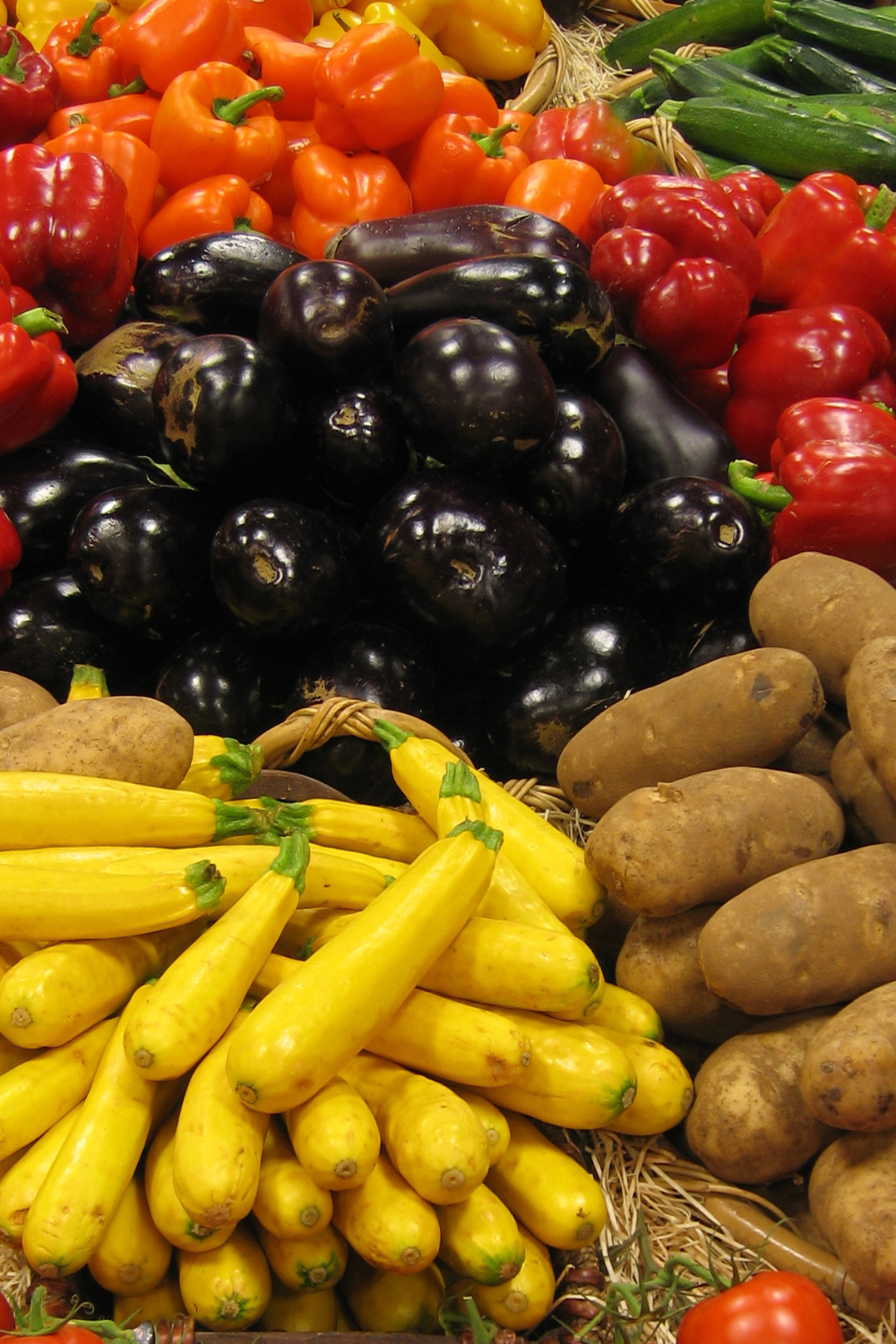
Congratulations, you’ve reached the finish line of your Thanksgiving gardening journey. It’s time to reap the fruits (or vegetables) of your labor and transform your backyard into a cornucopia of homegrown goodness.
Harvesting and storing your bounty not only ensures that you are enjoying the freshest ingredients possible, but also allows you to showcase the fruits of your labor. When it comes to harvesting, timing is crucial. Keep an eye on your plants and pick them when they are at their peak ripeness, whether it’s plump pumpkins or juicy apples. For root vegetables like carrots and potatoes, be careful not to damage them during the harvesting process.
Once harvested, avoid washing your produce right away as water can promote spoilage during storage. Instead, gently brush off any excess dirt and allow them to air dry completely. Storing homegrown vegetables in a cool, dark place such as a root cellar or basement will help extend their shelf life. If you’re dealing with excess produce, consider preserving methods such as canning or freezing for future use in warming soups or comforting pies. So this Thanksgiving, savor the joy of eating straight from your garden by properly harvesting and storing your homegrown bounty!
Knowing When to Harvest: Growing a Thanksgiving Feast
Timing is everything when it comes to harvesting your crops. You wouldn’t want to invite your guests over for Thanksgiving only to realize your veggies are not ripe enough to grace the dinner table. Keep an eye out for signs of ripeness, like vibrant colors or a gentle tug that easily separates the vegetable from the plant.
Properly Storing Fresh Produce
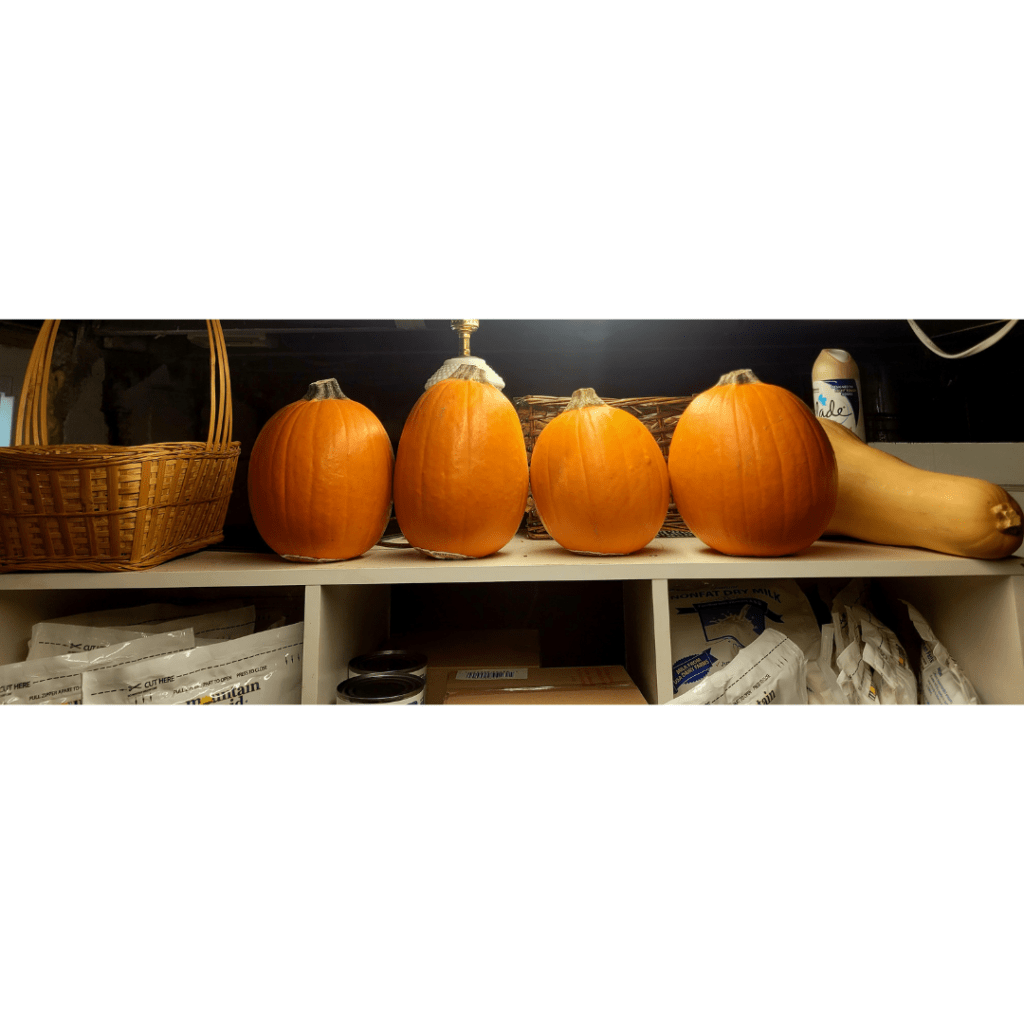
I keep my sugar pumpkins, butternut squash, and potatoes all in my cool dark basement pantry.
Now that you’ve plucked your prized produce, it’s important to store them correctly to maintain their freshness. Don’t throw them in the fridge willy-nilly; instead, treat them with the care and respect they deserve. Some veggies prefer cool and dry conditions, while others need a bit more moisture. Give each vegetable the storage space it craves, and your Thanksgiving produce will thank you later.
Delicious Recipes Using Your Backyard Harvest
Your Thanksgiving garden has grown, been harvested, and carefully stored. Now it’s time to bring these homegrown delights to the table and delight your loved ones with your culinary prowess.
Classic Thanksgiving Dishes
Let’s face it—Thanksgiving wouldn’t be complete without the classic dishes we all know and love. So, dust off your recipe cards and get ready to turn those homegrown veggies into mouthwatering classics like roasted Brussels sprouts, creamy mashed potatoes, and green bean casserole that’ll make Aunt Mildred do a double take. Using homegrown produce for Thanksgiving dinner will take your feast to new heights of flavor profiles. It can help make the holiday a bit more magical!
Creative and Unique Recipes
If you’re feeling a little adventurous, why not sprinkle some creativity into your Thanksgiving menu? Turn those homegrown butternut squashes into a velvety soup with a hint of cinnamon, or give your guests a surprise with a beet and goat cheese salad that will make their taste buds dance. The possibilities are endless when you have your own backyard harvest to play with!
Conclusion
As you sit at your Thanksgiving table, surrounded by loved ones and a spread of food that was lovingly grown in your own backyard, take a moment to revel in the satisfaction of a job well done. You’ve nurtured seeds into thriving plants, harvested the fruits of your labor, and transformed them into delicious dishes that will be remembered until next Thanksgiving.
Reflecting on the Rewards of a Homegrown Thanksgiving
Growing your own Thanksgiving feast is a journey filled with excitement, surprises, and a deep connection to the food on your plate. Not only do you get to enjoy the freshest ingredients, but you also have the satisfaction of knowing exactly where your food came from.
So, as you pass around the gravy boat and savor the flavors of your homegrown bounty, let the pride and joy of your Thanksgiving garden fill your heart. And who knows, maybe you’ll inspire others to uncover the secrets of growing their own feasts. Cheers to a Thanksgiving to remember!
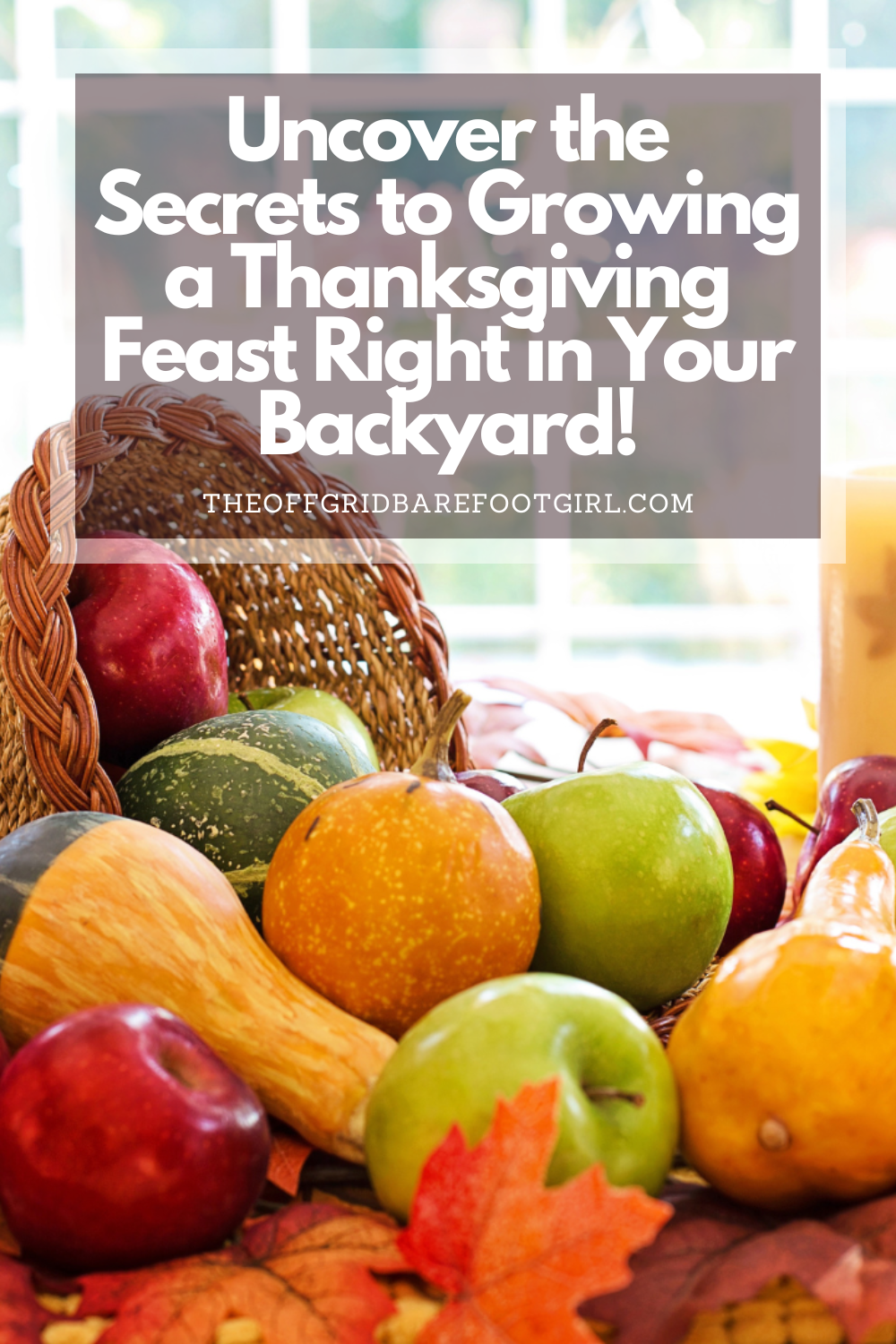
Frequently Asked Questions
1. Can I grow a Thanksgiving feast in a small backyard?
Absolutely! Even if you have limited space, you can still cultivate a variety of vegetables and fruits to contribute to your Thanksgiving feast. Consider using vertical gardening techniques, growing in containers, or utilizing raised beds to maximize your available space and yield.
2. How long does it take to grow vegetables and fruits for Thanksgiving?
The time it takes to grow your own Thanksgiving feast will vary depending on the specific plants you choose and their growing requirements. Some vegetables, like salad greens and herbs, can be harvested in a matter of weeks, while others, such as pumpkins or winter squashes, may require several months. It’s essential to plan ahead and start planting early enough to allow for proper growth and maturity.
3. What if I don’t have a green thumb or gardening experience?
No worries! Growing your own Thanksgiving feast can be a learning experience, even for beginners. Start small and choose plants that are relatively easy to grow and maintain, such as tomatoes, lettuce, or herbs. Educate yourself on basic gardening techniques, seek advice from local garden centers or experienced gardeners, and don’t be afraid to make mistakes – it’s all part of the learning process!
4. How do I prevent pests and diseases from damaging my Thanksgiving garden?
Pests and diseases can pose challenges to your Thanksgiving garden, but there are preventive measures you can take. Implementing organic pest control methods, such as companion planting or using natural repellents, can help deter pests. Additionally, regularly inspecting your plants for signs of disease and promptly addressing any issues can minimize the risk of widespread damage. Stay vigilant, and don’t hesitate to seek professional advice if needed.
Summary
I hope I have inspired you to plant your garden with these tips and products.
If you were encouraged by this post, I invite you to check out my FREE Printables Page for fun free printables, planners, and charts.
ENTER MY FREE Printables Page HERE
Here are some more of my gardening inspiration posts to check out!
How to Grow Your Own Food Without a Backyard!
My Best Spring Garden Posts in One Spot!
Spring Garden Soil Prep: How to Improve Your Soil
Seed Starting Mix 101: Everything You Need to Know!
How to Plan a 200 Sq. Ft. Vegetable Garden Layout
How I Easily Start My Seeds Without Expensive Grow Lights!
How to Create a Smart Garden: Tech Meets Nature!
The Best Cheap Raised Vegetable Garden Beds
How to Grow Artichokes: Plant Once and Harvest for 5 Years!
The Best 8 Fast-Growing Vegetables In Just 45 Days!
From Snow to Sow: Plan Your Spring Garden Now!
11 Fun Ways to Brighten Your Spring Garden with Personality
Top 10 Spring Garden Crops to Harvest in 30 Days and Eat Now!
The Best Survival Crops for Caloric Survival
My Victory Garden: What I Learned from 5+ Years
Why Every Family Should Have a Victory Garden in Their Backyard Now!
The Best Perennials for a Long-Term Survival Garden
The Best Essential Oils for Plants That Repel Garden Bugs
More Gardening Projects!
How to Grow Green Garden Peas: Perfect Plump Peas!
Hugelkultur: Does This Epic Pioneering Method Actually Work?
9 Ways to Celebrate Earthing Day in Your Garden!
Gardening Indoors: Secrets of Growing Your Food Inside!
How to DIY a Milk Jug Drip Irrigation System!
Why Cedar Mulch Is The Perfect Natural Weed Barrier
Gardening Projects
Onions: How to Grow Onions for Storage
Peas: How to Grow Garden Peas for a Bumper Crop
Carrots: How to Grow Carrots for a Bountiful Harvest
Prep Your Garden for Spring Planting with These Expert Tips!
How to Grow a Prepper Garden to Survive and Thrive
The Best Garden Tools You Need for a Productive Season
Fastest Growing Vegetables for Your Survival Garden
How to Grow Marigolds As Pest Control In Your Vegetable Garden
Must-Have Tools for a Successful Balcony Vegetable Garden
How to Effectively Combat Powdery Mildew in Your Garden
The Best Tips for Organic Gardening
How to Release Ladybugs In Your Garden for Organic Pest Control
The Best Garden Snail Control Strategies
The Best Spring Vegetables to Grow in Your Garden
Seed Starter Mix: How To Make Your Organic Seed Starter Mix At Home
How to Grow a Productive Canning Garden
How to Plant and Grow a Salsa Garden
Easiest Heirloom Vegetable Seeds to Grow Now
How to Use the Hand Twist Claw Tiller: Tackling Tough Soil
More Fun Gardening Posts to Check Out!
Planning Your Garden: How to Plan a Vegetable Garden: Expert Green Thumb Tips!
Winterizing the Garden: How to Winterize Your Vegetable Garden: Step-by-Step Checklist
Mulching the Garden: How to Make Leaf Litter Mulch
Grow a Pumpkin Patch: How to Grow a Pumpkin Patch in Your Backyard
How to Grow a Fall Garden: 9 Best Fall Crops
Clever Ways to Incorporate Indoor Composting into Your Home
How to Start Composting for the Garden: A Step-by-Step Guide
The Ultimate Guide to Composting in Your Suburban Backyard
Why I Built A Survival Garden in My Backyard
16 Best Medicinal Herbs to Grow in Your Garden Now
Blessings,
The Off Grid Barefoot Girl

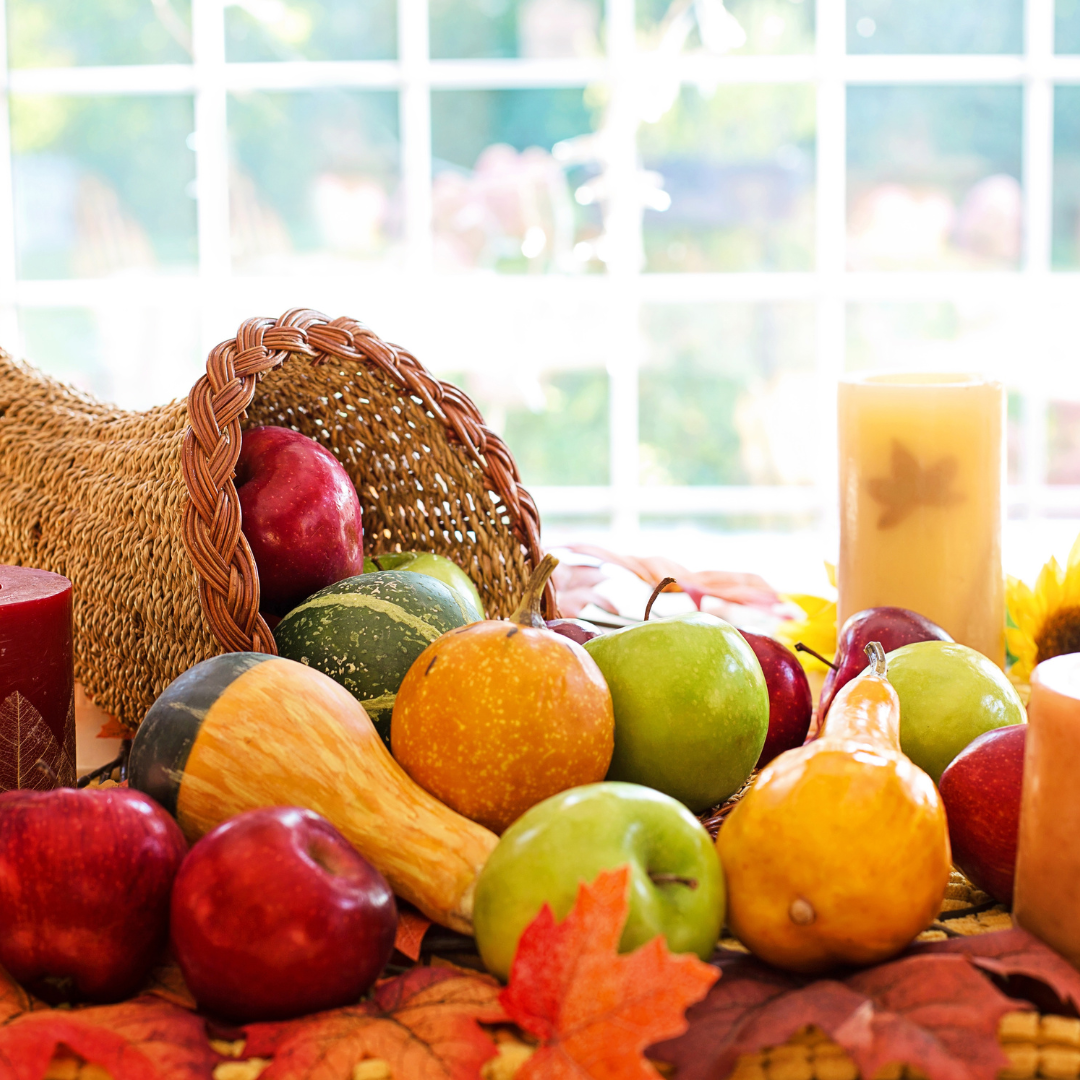





Thanks for sharing. I read many of your blog posts, cool, your blog is very good.